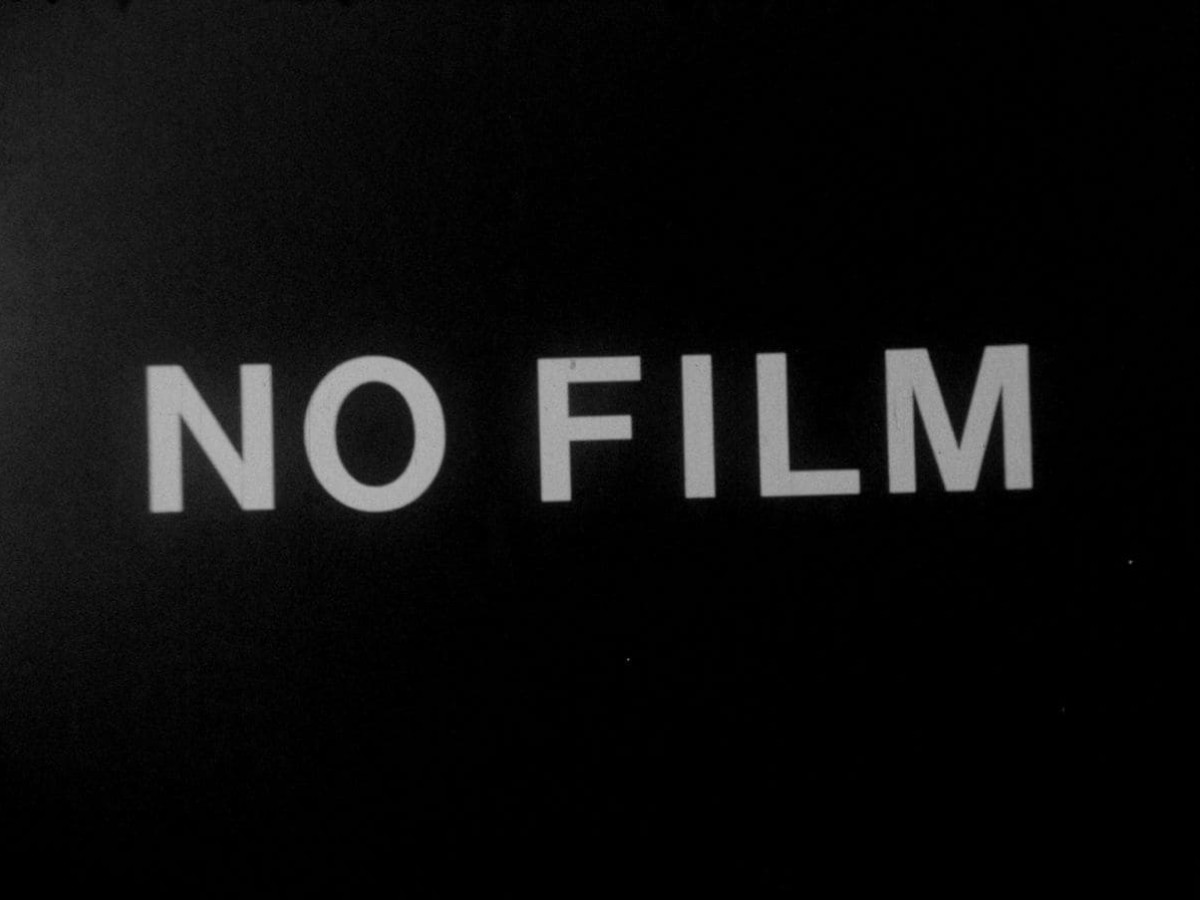Films You Cannot See Elsewhere
The Amos Vogel Atlas – Chapter 16
Text/Image
January 31, 2024
Although the written word may seem like the antithesis to film images, text has always been an important cinematic element: The credit text reveals who made and worked on the film, in the silent film era, intertitles and their written explanations were almost always needed, and in sound films, the superimposition of words and phrases – be they diegetic (in the form of a letter read) or the maker's intervening commentary – have maintained a particular importance.
One notable form is the so-called "text film" that is made using almost exclusively words and letters, a genre with a special tradition in art and avant-garde contexts, especially Austrian experimental film. Concurrent to post-war concrete poetry and the Wiener Gruppe, Marc Adrian developed a series of groundbreaking letter and text films which were followed by structural works by Ernst Schmidt jr., among others. At the same time, text film possibilities were pursued internationally, for instance by Swiss artist and concrete poet Diter Rot (aka Dieter Roth) and US avant-gardist Paul Sharits.
In two programs, we present a historically-framed selection of these rarely shown key works from our collection. In the first program, the pioneering role of the early avant-garde in the silent era is represented by the rare masterpiece Histoire de détective (1929) by Belgian filmmaker Charles Dekeukeleire, in which the intertitles lead a kind of life of their own independent from the images. The second program focuses on the increasingly free use of text and words in later years: As sign and message between, alongside, and in images by Stan Brakhage and Su Friedrich and as transformation into "another dimension" in Kathrin Resetarits' sign language study and Gerda Lampalzer's astounding and very comical "Laut-Malerei." (Christoph Huber / Translation: Ted Fendt)
Amos Vogel (1921–2012), an Austrian-born Jew, became one of the most important figures in international film culture after his emigration to the United States. The Amos Vogel Atlas is a series dedicated continuing Vogel's oppositional legacy alongside the study of his literary estate, which is deposited in the Film Museum. Rarities from the collection represent key focal points.
Although the written word may seem like the antithesis to film images, text has always been an important cinematic element: The credit text reveals who made and worked on the film, in the silent film era, intertitles and their written explanations were almost always needed, and in sound films, the superimposition of words and phrases – be they diegetic (in the form of a letter read) or the maker's intervening commentary – have maintained a particular importance.
One notable form is the so-called "text film" that is made using almost exclusively words and letters, a genre with a special tradition in art and avant-garde contexts, especially Austrian experimental film. Concurrent to post-war concrete poetry and the Wiener Gruppe, Marc Adrian developed a series of groundbreaking letter and text films which were followed by structural works by Ernst Schmidt jr., among others. At the same time, text film possibilities were pursued internationally, for instance by Swiss artist and concrete poet Diter Rot (aka Dieter Roth) and US avant-gardist Paul Sharits.
In two programs, we present a historically-framed selection of these rarely shown key works from our collection. In the first program, the pioneering role of the early avant-garde in the silent era is represented by the rare masterpiece Histoire de détective (1929) by Belgian filmmaker Charles Dekeukeleire, in which the intertitles lead a kind of life of their own independent from the images. The second program focuses on the increasingly free use of text and words in later years: As sign and message between, alongside, and in images by Stan Brakhage and Su Friedrich and as transformation into "another dimension" in Kathrin Resetarits' sign language study and Gerda Lampalzer's astounding and very comical "Laut-Malerei." (Christoph Huber / Translation: Ted Fendt)
Amos Vogel (1921–2012), an Austrian-born Jew, became one of the most important figures in international film culture after his emigration to the United States. The Amos Vogel Atlas is a series dedicated continuing Vogel's oppositional legacy alongside the study of his literary estate, which is deposited in the Film Museum. Rarities from the collection represent key focal points.
Related materials
Books Film as a Subversive Art
